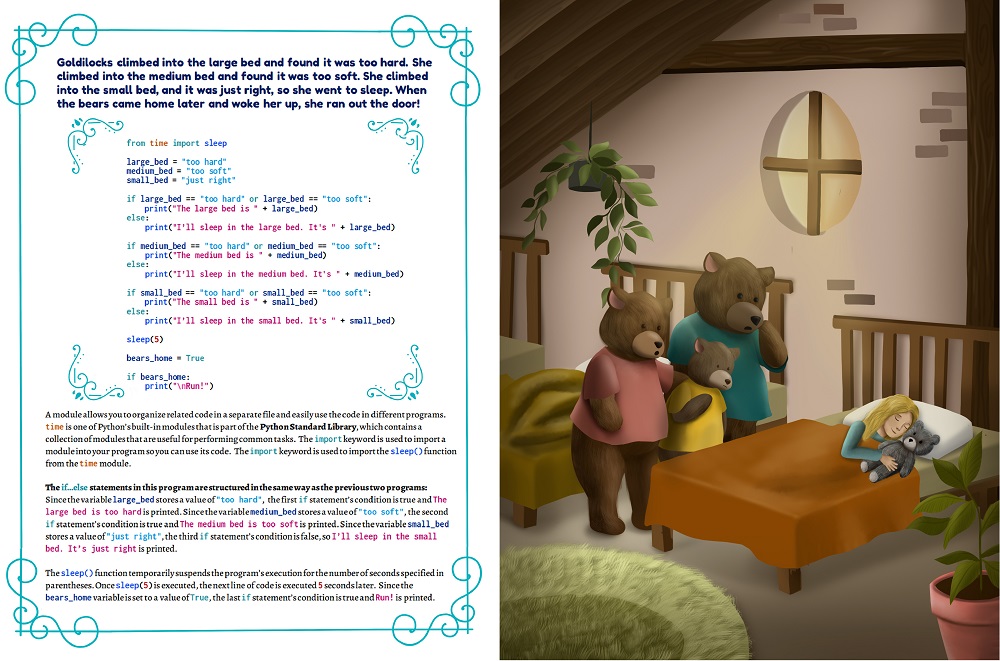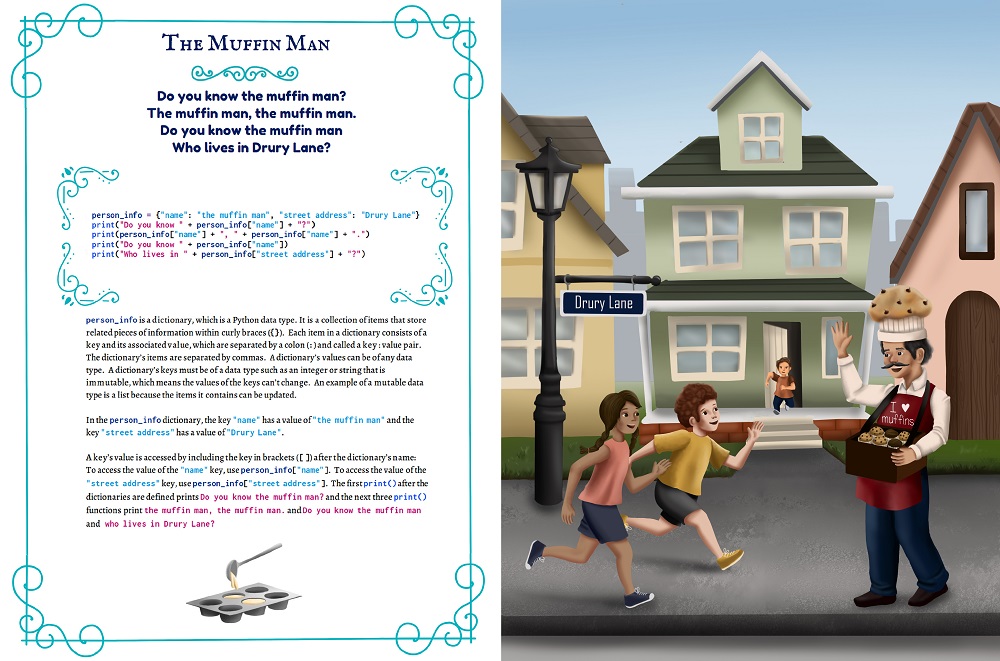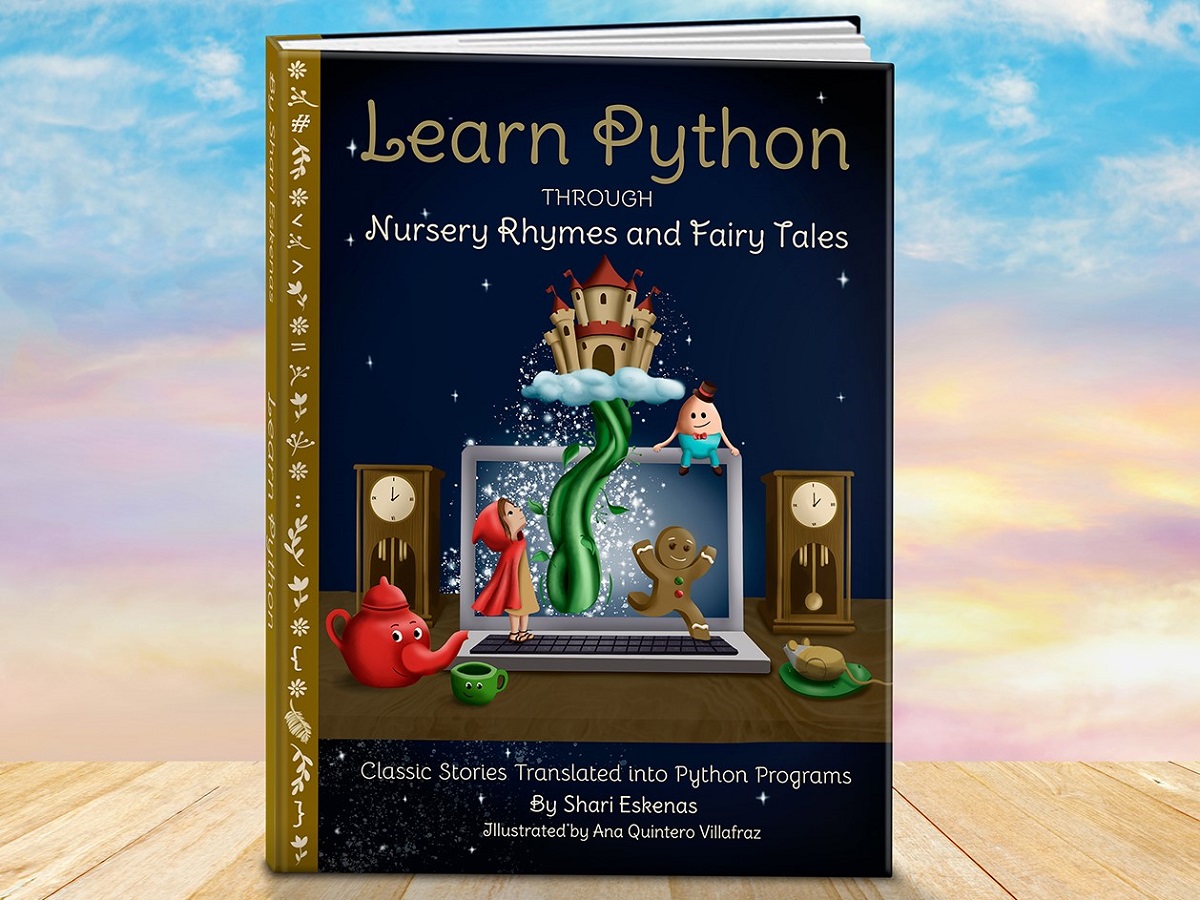This past year has seen almost all students turn to technology more than ever before as part of their education. STEM (Science, Technology, Engineering, and Mathematics) is becoming more engrained in education for today’s students. As a result, understanding coding or programming is more important than ever. While many first learn to code with block coding where different ‘blocks’ of code are stacked together like building blocks, text coding is the next step. According to many in Computer Science education as well as people in the industry, Python is one of the most important languages for beginners to learn since it is applicable to so many different areas. Luckily, there is an easier way to learn this computer language.
What is Learn Python Through Nursery Rhymes and Fairy Tales?
Shari Eskenas, the founder of Sundae Electronics LLC, is launching a Kickstarter for her latest book, Learn Python Through Nursery Rhymes and Fairy Tales. In an innovative way to teach coding, Shari has written a picture book that covers the basics of the Python computer language. The Kickstarter campaign begins Tuesday, August 10th at 9:00 am PST. Check out the campaign here. For a pledge of $12 you can get an E-book copy or for $29 get both a hardcover book as well as an E-book. If you pledge on the first day, you can get the Early Bird discount of both book formats for only $25. Shari’s previous book, A Day in Code: Python, also teaches readers Python through a story about two children and their summer day. It was a successful Kickstarter campaign and the book is currently available on Amazon.
New to Kickstarter? Check out our crowdfunding primer.
Don’t let the picture book format fool you that this is just for young children. This book can help older children and even adults learn Python. Most books that teach how to code are dry, boring, abstract, and written for people already familiar with coding concepts. Learn Python Through Nursery Rhymes and Fairy Tales takes an innovative approach to teaching Python. Across a spread of two pages, the content is divided into sections. At the top of the page is p the story or rhyme written in prose. Following that is coding written in the Python language which can be typed into an editor. Then when the program is run, the story will be told on the screen. At the bottom of the page is an explanation of what the code means. The opposite page features an illustration of the story’s events. New concepts are taught as readers progress from one story to the next.

Learn Python Through Nursery Rhymes and Fairy Tales covers the basics of Python, including the following topics:
- Syntax
- Keywords
- Strings and data types
- Operators
- Input/Output
- Conditional statements and loops
- Lists, dictionaries, and tuples
- Functions and methods
- Classes and objects
- Modules
Why should I read Learn Python Through Nursery Rhymes and Fairy Tales?
As a computer science teacher in high school, and an advocate of teaching computer science to all students, I appreciate how coding can help students in many other areas. It helps with logical thinking, creativity, decision making, planning, problem solving, and focus. In fact, as I have taught coding to students who struggle with math and algebraic concepts, they learned logic functions that then helped them with math. Coding also helps build confidence and perseverance so they gain the ability to work through challenges without giving up.
Many programmable products feature Python as a coding language. One of my favorite microprocessors for teaching, the BBC micro:bit, offers the ability to use Python. You can also use Python for programming the Raspberry Pi which is popular among both students and hobbyists. As I have spoken with industry partners about what computer science students should learn, all agree that Python is a great language for beginners that is also used in the industry. Python is used for data science and analysis, AI and machine learning, scientific and numeric computing, computer vision, web development and apps, and even game development. If there is one computer language you learn, it should be Python.

Years ago when I was a new teacher, I attended some training on teaching reading and comprehension while co-writing our school’s literacy plan. One of the presenters demonstrated the power of picture books for older students and even adults and showcased a number of picture books that were clearly written for older students and taught science and math concepts. Therefore, when I reviewed Learn Python Through Nursery Rhymes and Fairy Tales, I was excited to see how it was written. I really like the format of story, code, and explanation. The story or rhyme is something familiar. The code then converts the story into Python. Finally, the explanation helps readers to understand the commands and concepts in the code. At the end of the book, the author describes how readers can type in the code from the book into their computer using a Python compiler and watch the code work or even edit their code to try for different results. For example, in the code for the Muffin Man, by changing the word ‘muffin’ in the first line of code to something else like ‘cookie’, when you run the program all instances of Muffin Man will be changes to Cookie Man. I am very impressed with Learn Python Through Nursery Rhymes and Fairy Tales and highly recommend it for anyone wanting to learn Python as well as those who want to expose children to important life skills they can acquire through learning computer coding.
Be sure to check out the Kickstarter campaign.
Disclosure: GeekDad received a copy of this A Day in Code for review purposes.




